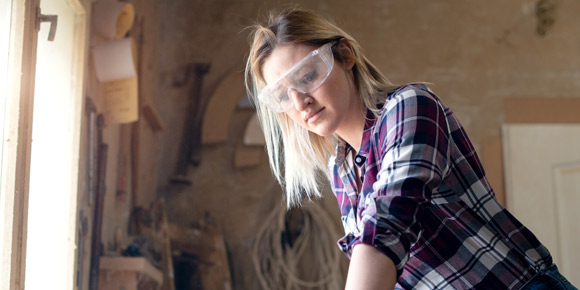If you’re a first-time home buyer, you can borrow from your RRSP for the down payment— but you have to pay it back, or take an income tax hit.
How first-time home buyers can tap their RRSPs
If you are a first-time home buyer or you already own a home but need a more accessible residence for yourself or a dependent relative, the Registered Retirement Savings Plan Home Buyers’ Plan (RRSP HBP) can help you come up with the down payment.
How does the RRSP Home Buyers’ Plan work?
The Home Buyers’ Plan works like this: You can borrow up to $25,000 from your RRSP to buy or build your first principal residence. Couples (legally married or common-law) can withdraw up to $25,000 each for a total of $50,000 towards the same home purchase.
Do I qualify as a first-time home buyer?
To qualify as first-time buyers, you must be able to show that neither you nor your spouse has owned a home that you occupied as your principal residence in the past five years. If you’re borrowing from your RRSP to buy or build for yourself or a dependent relative with a disability, the first-time buyer condition doesn’t apply. (See the Canada Revenue Agency’s rules: Persons with disabilities)
Pay your RRSP back over 15 years
You don’t have to pay income taxes on the money you take out of your RRSP, as long as you pay it back to any of your RRSPs, a new RRSP or a Pooled Registered Pension Plan (PRPP) within 15 years. The 15-year repayment period begins two years after the calendar year in which you make the withdrawal.
For example, if you pull money out in 2018, you generally must purchase a qualifying home before October 1, 2019 and the first annual repayment will be due by the end of 2020 or within the first two months of 2021. If you do not make the minimum repayment one year, you will have to include the amount you did not repay as RRSP income on your tax return.
What if you don’t need the money for your down payment?
Even if you already have enough for a down payment, it may make sense to take advantage of the HBP. If you have contribution room, you can deposit the money you have saved for your down payment into your RRSP, get the tax deduction and use any tax refund you receive to repay the RRSP or cover other expenses related to buying your home.
But remember: You can only deposit money to your RRSP, get the tax deduction and withdraw funds in the same year if the money has been in the plan for at least 90 days before you withdraw it.
Outstanding repayments mean a tax bill
While borrowing money from your RRSP to help finance a home purchase may seem like an attractive option, it is important to understand the potential downside of this strategy:
You will forgo earning the tax-sheltered, compounding interest on the amount withdrawn until you pay it back.
If you borrow the maximum allowed for a couple, repaying your RRSPs at $3,333.33 a year for 15 years may add an unmanageable burden on top of hefty mortgage, tax and utility payments.
Your ability to make regular annual RRSP contributions could be compromised until the HBP loan is paid off.
Consider using your TFSA
If you have saved money in a Tax-Free Savings Account (TFSA) it may make more sense to use that money as a down payment for your new home instead of borrowing from your RRSP. You will not benefit from the RRSP tax deduction on contributions, but withdrawals are tax free. You can also choose to re-deposit the money or not on your own schedule, without any further tax implications.
— Sunlife Financial



